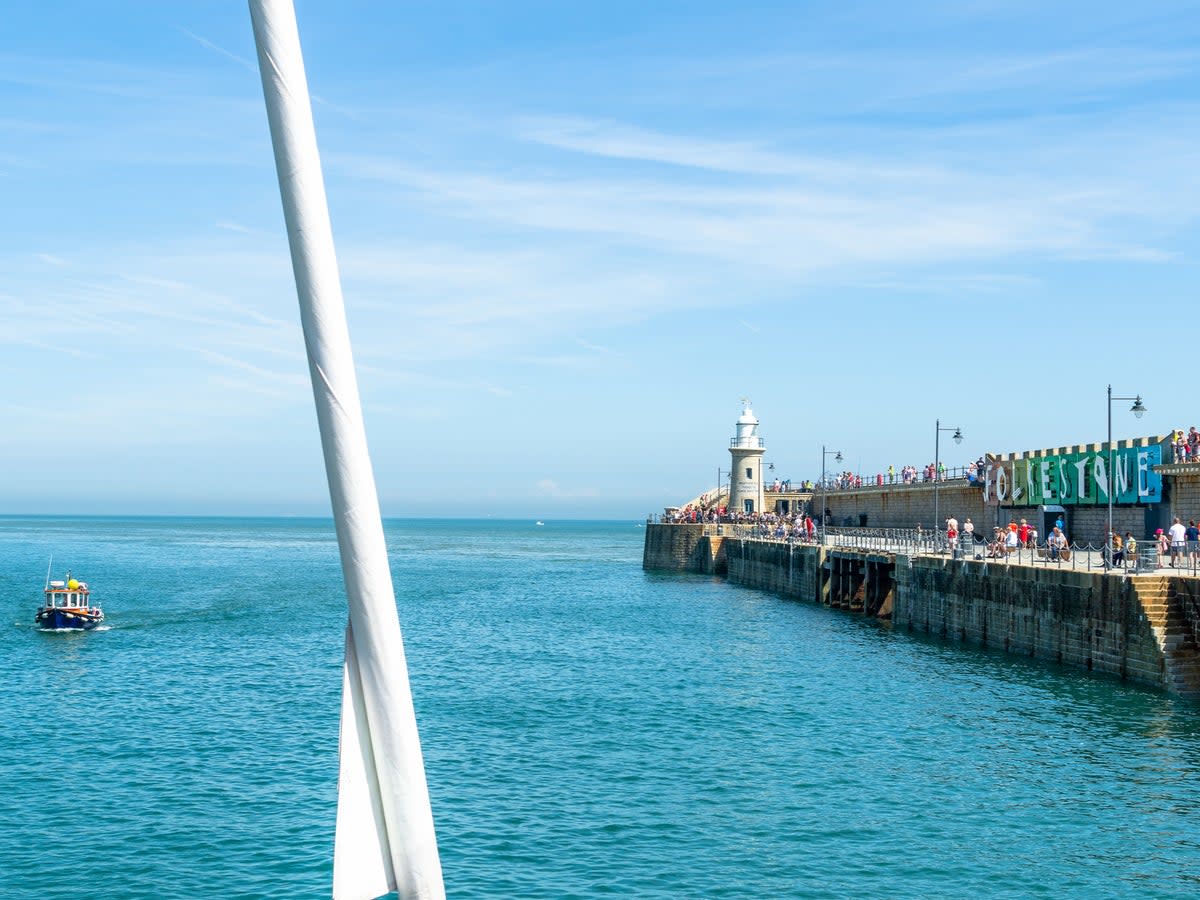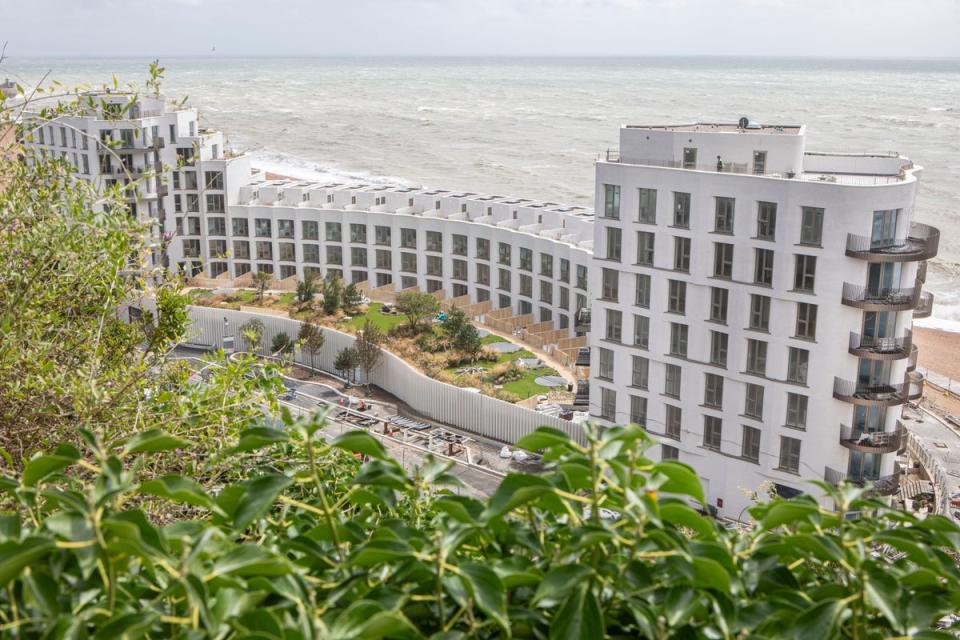I live in one of the ‘best’ places in the UK – there’s a dark side to wearing the crown

This weekend, I had the strange experience of reading about my town in a national broadsheet. “The very model of modern regeneration for shipshape and stylish living,” they called it, fawning over the “public art at every turn”, “funky shops”, “colourful old high street” and the accompanying “buzz”.
It provoked a mix of emotions. On the one hand, pride – people are seeing what I see! Finally, my girl has had her She’s All That makeover and is in the running for prom queen! On the other, an unholy dread – because that popularity can only bring one thing: skyrocketing prices.
What has prompted this mild existential crisis is that, for the first time in my life, I live in one of the UK’s most desirable destinations. That’s according to The Times, at any rate, which has just named Folkestone as the best place to live in the South East as part of its recently released annual rankings for 2024.
The profile of this creative hub on the Kent coast that’s home to the Chunnel (Channel Tunnel) has been steadily growing over the past five to 10 years – and this latest accolade has tipped it over into fully-fledged mainstream status. A town crowned “best” in a category that includes the likes of commuter darlings St Albans and Tunbridge Wells, plus the former king of coastal cool Brighton, is officially no longer hiding its light under a bushel.
But while media attention can obviously be a boon, popularity – and particularly overpopularity – often comes at a cost, both literally and metaphorically. Does overexposure risk endangering all the things that made somewhere great in the first place?
This gentrification tension was neatly encapsulated recently when two friends of mine got into a somewhat heated debate about its effect on Folkestone. One was pointing out the positives – it attracts people with disposable income, which helps sustain multiple independent businesses in the area that we all benefit from. The other, who currently rents but dreams of buying a property, argued that the town’s “buzz” is attracting developers and second-home owners, pricing out locals. “How many more people from London do we need to move here?” she asked, incredulously. “When is enough, enough?”
I merely shuffled my feet sheepishly at this point – I am very much part of The Problem. Firstly, I was that Londoner looking for somewhere cool to start afresh; or, as they call us in this neck of the woods, with an occasionally hostile undertone, a “DFL” (Down From London). I also understand my friend’s frustration better than most. When I first started looking at buying a house in Folkestone, back in 2018, it was incredibly affordable (part of the distinct charm). Fast-forward to 2021 when I was actually in a position to move, and the supercharged post-lockdown housing market had revved into overdrive. It was 18 months between the start of my search and my moving here: 18 months in which I spent every weekend at viewings; made countless “best and final” offers that were trumped by cash buyers who would do lacklustre “refurbs” and have those houses back on the market six months later; and had four separate offers accepted before the purchases fell through.

It speaks to a bigger problem: if Londoners are moving out of the city because they can’t afford to get on the property ladder, pushing up prices in commuter towns as a result, which in turn squeezes out locals... what next? How best to deal with the housing crisis knock-on effect?
I’m also part of the problem because I’ve done my fair share of raving about Folkestone’s appeal in the national press. My move was prompted by a piece I wrote about it being “cooler than Margate” after I visited six years ago, and I’ve since waxed lyrical about making friends here, sung its praises as the ultimate staycation destination, and done a deep-dive into the healing powers of our local community sauna. I’m a Folkestone stan 4eva, and that has spilt over into my work.
I never really thought about the impact all that might have until recently, when an acquaintance asked me, only half-joking, to “stop writing about how great it is here until after I’ve managed to buy a flat, please… Every time someone publishes an article, I have to save another £5k for my deposit.”
Does overexposure risk endangering all the things that made somewhere great in the first place?
I’m not quite arrogant enough to think I’m singlehandedly responsible for driving up the housing market. But the groundswell of recognition that has seen Folkestone go from “up-and-coming” to “up-and-come” seaside darling has resulted in a dramatic shift. In March 2014, the average price of a property in Folkestone was £186,227. By August 2023 it had risen by almost 86 per cent to £343,808.
Popularity has other drawbacks, too. Roger de Haan, the ex-Saga CEO whose money has been the driving force behind Folkestone’s stellar regeneration, has stirred up controversy in the last couple of years with plans for a number of upmarket housing developments on the seafront. One has already attracted censure for creating a wind tunnel that makes deeply unpleasant, banshee-like screeching noises whenever a gust picks up. Another is to be built on the Harbour Arm, taking the place of the current much-loved drinking and dining spots, stalls selling wares from local independent businesses, and seating areas where people can just hang out in the sunshine and enjoy the sea views.
These new properties are all high-end, too expensive for most locals to afford: one-bedroom flats in the Shoreline Crescent development currently start from £430,000; a four-bedroom beach house is on the market for £2.15m.

De Haan was also responsible for setting up the charitable trust Creative Folkestone, whose robust and thoughtful model of artist-led gentrification drew countless newcomers to the town. The trust bought up multiple abandoned buildings, converted them into living and working spaces, and invited people to apply to rent them at a subsidised rate. The idea was to build a creative community, keeping these rents below market value to ensure that the artists who would help turn Folkestone into a Destination with a capital “D” wouldn’t then be priced out once they’d made it trendy. Unlike locales where gentrification through art has happened organically rather than intentionally – Shoreditch in east London being a prime example – there was a failsafe in place to stop it from morphing into some shiny, soulless, corporate nightmare. But even this scheme seems to have been watered down in recent years thanks to its popularity.
A local writer and director tells me he moved to Folkestone specifically because of the Creative Folkestone living spaces; he was initially quoted a lead-in price of £450 per month to rent a flat back in 2021. A quick scan of the website today shows all available properties cost £1,050 per month. He now feels completely disillusioned. “The promise of ‘cheap rent for artists’ was the single biggest factor in my decision to move down to Folkestone,” he says. “But in reality, it’s now cheaper to rent privately than through Creative Folkestone. And the rents are going up faster than I can keep pace; the cheapest apartments have almost doubled in price since I arrived here almost two and a half years ago.”
The rents are going up faster than I can keep pace; the cheapest apartments have almost doubled in price since I arrived here
Local creative
Meanwhile, as with all gentrification, there’s the thorny issue of an ever-growing divide between the original residents and the influx of new people attracted by all the hype – a divide that often stems from income inequality. Folkestone and Hythe has the third-highest youth unemployment rate of any area in Kent, with 7.8 per cent of 18- to 24-year-olds currently out of work (3 per cent higher than the county average). Some 33.3 per cent of children in the constituency were living in poverty in 2021-22, according to data from the charity Action For Children. As Rhys Griffiths writes in a stirring piece for Kent Online, “The challenge now is to ensure that the community doesn’t become too deeply divided between the haves and the have-nots.”
Don’t get me wrong: the town still has plenty to recommend it. I’m still a Folkestone stan 4eva. But maybe being crowned one of the “best” places to live isn’t the hard part; maybe what’s tricky is what comes next. Prom night is over: now it’s time to figure out what Folkestone’s future will look like.


